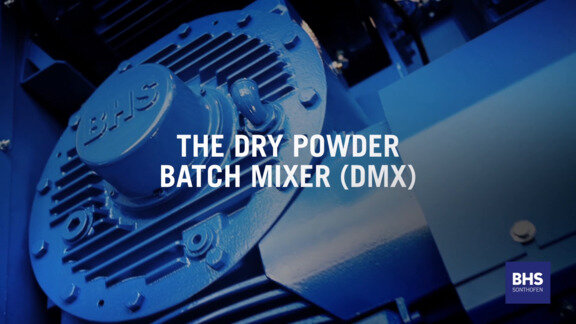Powerful tools: BHS machines for the production of binders
Binding agents such as cement, burnt lime, gypsum and others give building materials strength and stability. We support you with high-performance crushing technology or mixing technology individually tailored to your needs. This means you can count on excellent results.
Burnt lime crushing
Burnt lime crushing – A job for the rotor impact mill
Turning highly coarse mixtures into very fine ones: Extensive crushing ratios are required when processing burnt lime. The rotor impact mill (type RPM) produces the desired final particle sizes for input sizes of up to 120 millimeters. The speed and gap width can be adjusted to achieve the desired grading curve.
Binder mixture
Superior mixing technology for binder mixtures
We developed our dry powder batch mixer (DMX) specifically for the mixing of powdery binding agents. It can be used for cement, lime, gypsum or fly ash-based mixtures, for example. The DMX proves to be clearly superior to single-shaft mixers or intensive mixers: The sophisticated mixing mechanism with its directional three-dimensional movement generates a more intensive mixing effect at a lower speed. Components of the formulation that are only added in very small quantities are distributed quickly and homogeneously across the mixture. Sensitive components (perlite etc.) are not damaged when processed using the DMX.
The dry powder batch mixer (DMX) for the production of dry material mixtures

The dry powder batch mixer (DMX) for the production of dry material mixtures
Twin-shaft mixing technology is suitable for all formulas and offers a wide range of benefits. The mixing procedure has a significant effect on the quality of the mixture produced and the economic efficiency of the production process. Watch the video to learn more about the use of the dry powder batch mixer (DMX) at the dry-mortar plant of Rethmisch GmbH.
Attention to detail has a big impact

Attention to detail has a big impact
In the dry powder batch mixer (DMX), two large discharge flaps enable residue-free discharge, preventing material carry-over when changing formulations. We have developed special seals that close the flaps reliably and watertight, thus meeting the requirements of the cement industry. To minimize residues in the machine, a smooth mixing unit that facilitates quick and easy formulation changes is available as an option.
Bypass dust processing
Using filters to process cement dust

Using filters to process cement dust
Cement dust, also referred to as bypass dust, is generated in cement plants during calcination. Vacuum belt filters such as the indexing belt filter from BHS-Sonthofen make it possible to completely return this by-product into the manufacturing process and thus significantly increase cement production volumes.















































